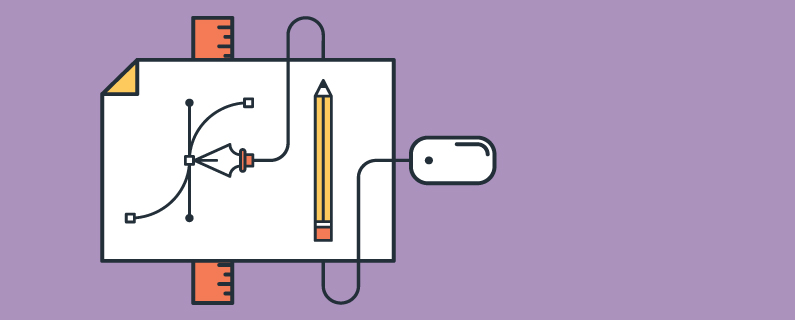
Being in a creative profession like graphic design is great, because you get to spend your time coming up with new, innovative ideas and making them a reality. However, like any job, there is a downside. You spend your days having to come up with new, innovative ideas and making them a reality. There’s no “I’m just not feeling creative today.” You’ve got to be ready to come up with something interesting at all times, and then execute it to perfection. In order to do this, your skills and your ability to turn on the creativity need to stay sharp. There are many ways to do that, but these are some of my favorite.
Critique the work of others:
This doesn’t mean you should start slamming other designers’ work and making enemies in your industry. After all, nobody likes a bully. But if you’re able to recognize good design vs. bad design and verbalize what makes it such, that’s going to help you in your own projects as well.
The Internet is filled with places for designers to submit their work. Behance is a good place to start, because there’s a wide range of projects and skill levels displayed. A good exercise for Behance is to pick a designer with a good sized body of work and spend some time looking through their portfolio. Think about what works, what doesn’t and what you would do differently if it were your project.
If you’re comfortable giving feedback in real life, there are opportunities from time to time to judge a competition or be on a panel for a portfolio review at a local college. This is a good way to practice articulating your observations, while also helping another less experienced designer improve their work through constructive criticism and hopefully a bit of praise as well.
Blog:
Similar to critiquing the work of others, blogging is another way a designer can become more skilled and well-rounded, without even touching a pencil or the pen tool. I’ve written about the importance of designers blogging before, I feel it can’t be stressed enough.
When you’ve committed to getting an idea written and out of your head, it really forces you to be more thorough. Whether it’s a brand critique or a post about design software or procedures, if you can clearly explain it to an audience it becomes valuable content and a worthwhile use of your time.
Another benefit to blogging about design is that it often starts discussions with other creatives. I don’t mean the internet trolls who often come along and just incoherently bash something without reading it. Those are generally best to ignore. But if another designer engages in conversation, or even a friendly debate, that can be a really great way to get new perspective on an idea.
Online classes:
Learning a new skill or improving one you’re already moderately comfortable with is always a good thing. One of the hardest things for many designers is getting out of a sort of creative rut. When you work on the same type of projects frequently, it tends to get monotonous and maybe a little tiresome. Getting out of your comfort zone every now and then is a great way to keep your skills sharp and fresh.
One of my favorite sites for this is Skill Share. There’s a wide range of classes available, and they’re very reasonably priced, especially when you consider the fact that the materials and access to the lessons never expires. Whether you decide to learn about hand lettering, animation or photo editing, the lessons are most likely going to make you a more valuable designer.
Attend seminars:
Getting out and meeting people is a great way to make connections and create new opportunities. Besides just general networking, I like to sometimes change it up and go to an event specifically targeting people in my industry. Meeting other creatives and hearing a design-focused speaker is an awesome and fun way to get motivated to grow as a designer.
One of my favorite events to attend is the global Creative Mornings series. The topics vary month to month, and each city has a different speaker. The themes are generally related to inventive thinking, and I’ve found that whenever I leave there I immediately want to create something myself.

